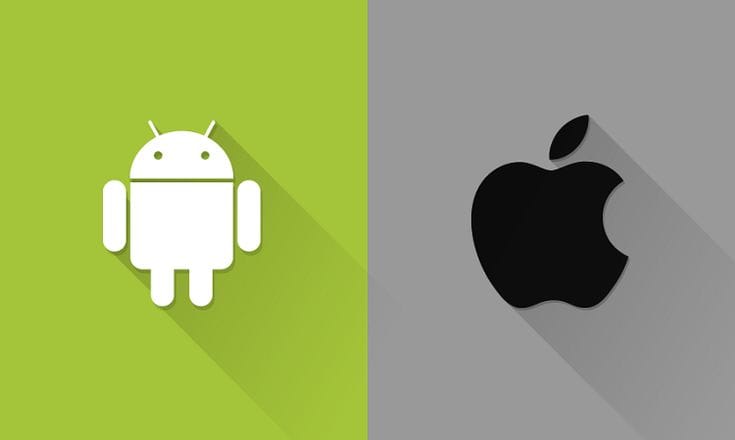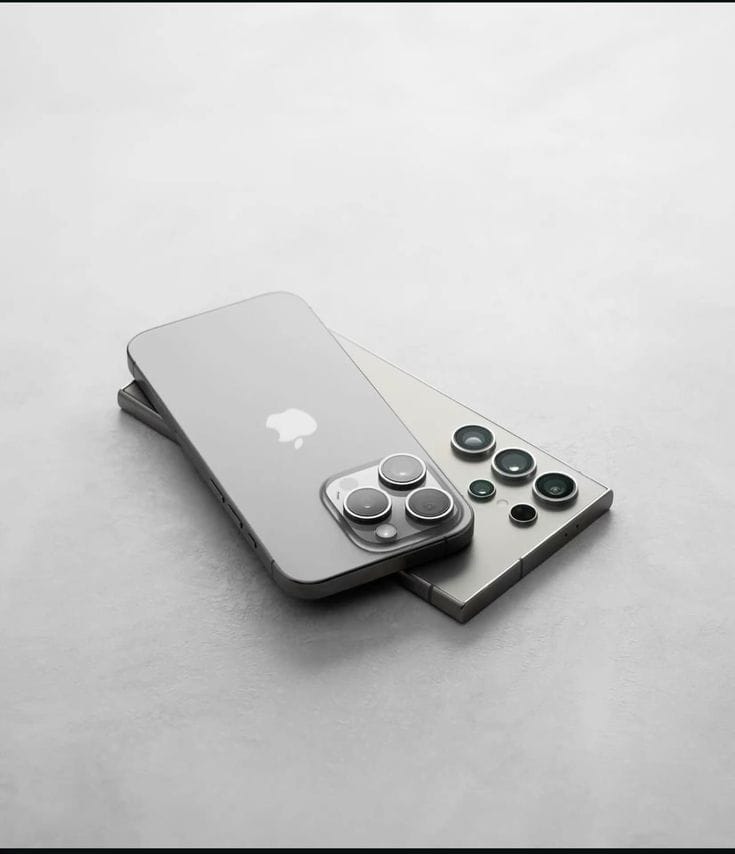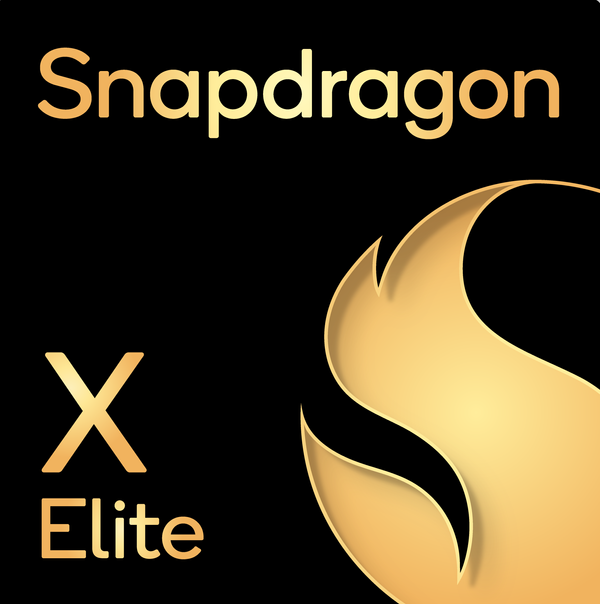Apple vs Android: A Comprehensive Ecosystem Comparison
Apple's ecosystem offers seamless integration, privacy, and premium devices with consistent updates, ideal for those seeking simplicity. Android's ecosystem provides flexibility, customisation, and affordability across diverse brands, catering to a wide range of user preferences and budgets.

In today’s digital era, ecosystems play a pivotal role in shaping user experiences across devices and services. Apple and Android ecosystems are the two dominant forces, each offering distinct advantages, features, and limitations. This article delves into a detailed comparison of these ecosystems across several key aspects, including device integration, software compatibility, app offerings, customisation, privacy, pricing, and more.
1. Device Integration
Apple’s ecosystem is renowned for its seamless integration across devices like iPhones, iPads, Macs, Apple Watches, and Apple TVs. Every device connects and communicates with eachother seamlessly and quickly. Features such as Handoff, AirDrop, iCloud synchronisation, and Universal Control allow users to transition effortlessly between devices. For example, you can start a task on your iPhone like copying a text or any file and finish it on your Mac by pasting it, or answer a call on your iPad. The integration is smooth and cohesive, providing a unified experience. One of the noteworthy features is able to track your devices from another device in real time.
The Android ecosystem, on the other hand, offers integration across a broader range of devices from various manufacturers, such as Samsung, Google, OnePlus, and Xiaomi. While Android’s flexibility enables integration across diverse hardware, the experience can vary depending on the brand and model. Samsung’s ecosystem, for example, is tightly integrated with its own smartphones, tablets, and wearables through Samsung SmartThings. However, the diversity can sometimes lead to inconsistencies in integration.
2. Software Compatibility
Apple’s ecosystem benefits from proprietary software and hardware. macOS, iOS, watchOS, and tvOS are designed to work exclusively with Apple hardware, ensuring optimal compatibility and performance. Updates are rolled out globally and simultaneously, giving users access to the latest features and security enhancements across devices. Which means your phone, tablet, laptop and the watch gets the update at the same time together.
Android’s ecosystem, developed by Google, powers a wide range of devices from multiple manufacturers. This openness fosters innovation and choice but often leads to fragmentation as different companies envision their products differently. For instance a watch made by Google will receive updates slightly differently as the watch made by Samsung does. Software updates are not consistent across all Android devices, as manufacturers decide when and which devices receive updates. This can result in older devices being left behind, which diminishes uniformity. But within the Samsung ecosystem, it is as close as Apple gets it.
3. App Offerings
The Apple App Store is known for its curated selection of high-quality apps, stringent security measures, and consistent performance. Developers often prioritise iOS due to its lucrative user base, resulting in some apps being exclusive to the Apple ecosystem. However, Apple’s strict guidelines can limit flexibility for developers. For instance, users have to go through difficult steps to jailbreaking for them to run applications that are not Apple Exclusive.
Google Play Store, Android’s equivalent, boasts a significantly larger number of apps, thanks to its openness and fewer restrictions on developers. This allows for a diverse range of apps, including experimental and niche options. However, the open nature can sometimes compromise app quality and security, as malicious apps may occasionally slip through Google’s screening process. Many of the millennials remember rooting their own Android Phone to test beta applications.
4. Customisation and User Control
Apple’s ecosystem is tailored for simplicity and ease of use, with limited customisation options. This “what you see is what you get” philosophy appeals to users who prefer a straightforward and consistent experience. Customization is mainly limited to changing wallpapers, app layouts, and widget configurations. The Apple very recently pushed an update to arrange icons according to user preference while it has been staple for Android since its inception.
Android’s ecosystem champions user control and personalization, offering extensive customisation options. Users can modify home screens, widgets, themes, and even install custom ROMs for a completely unique experience. This flexibility appeals to tech-savvy users who enjoy tailoring devices to their preferences.
5. Privacy and Security
Privacy has become a cornerstone of Apple’s ecosystem, with features like App Tracking Transparency and advanced encryption. Apple positions itself as a privacy-first company, giving users control over their data and minimising targeted advertising.
Android has improved its privacy features in recent years especially Samsung, but its openness presents challenges in achieving the same level of security as Apple. Google collects more user data for advertising purposes, though it provides tools to manage data sharing. Manufacturers’ additional software layers may also introduce vulnerabilities.
6. Pricing and Accessibility
Apple’s ecosystem is premium, with higher upfront costs for devices like iPhones, iPads, and Macs. While the build quality and user experience justify the price for many, it may deter budget-conscious buyers. Apple does offer more affordable options like the iPhone SE and entry-level iPads, but they still command a premium compared to similar Android devices. To make an entry level cheapest ecosystem Apple can offer, you would need the following:
Here’s a neat table summarizing the items and their prices:
| Item | Price (₹) |
|---|---|
| iPhone 16e | 59,900 |
| MacBook Air M4 | 99,000 |
| Apple Watch SE | 24,900 |
| iPad 11 | 34,900 |
| AirPods 4 | 12,900 |
| Total | 2,31,600 |
Thats a whole lot of money to begin with.
Android’s ecosystem caters to a wider range of budgets, from entry-level smartphones to flagship devices. This inclusivity makes Android accessible to more users globally. However, lower-cost Android devices may compromise on quality and longevity. You can buy the most cheapest Android ecosystem comprising of smartphone of your choice, a laptop that runs Windows or Chrome OS, a cheapest watch that can just do the job and any TWS that you can find. Feel free to curate your own list!
7. Ecosystem Lock-In
Apple’s ecosystem thrives on exclusivity, with proprietary technologies like FaceTime, iMessage, and AirPods optimised only for Apple devices. While this creates a cohesive experience, it can make transitioning to another platform difficult. The ecosystem lock-in encourages users to stay within the Apple bubble. Users who have once been acclimatised to Apple find it difficult and resisting to switch back.
Android’s ecosystem is more open and versatile, allowing users to mix and match devices from different manufacturers. Compatibility with third-party apps and services makes it easier to switch to another platform, fostering flexibility.
8. Ecosystem Services
Apple’s ecosystem includes services like iCloud, Apple Music, Apple Arcade, and Apple TV+, providing a comprehensive suite for users. The integration of these services with hardware enhances the experience, but reliance on subscriptions can be costly over time.
Android offers services like Google Drive, YouTube, Google Play Pass, and Google TV, which are widely available across devices and platforms. These services are often free or more affordable, making them accessible to a broader audience.
9. Gaming Experience
Apple’s gaming ecosystem is centred around Apple Arcade, offering exclusive titles that run smoothly across devices. However, Apple devices are not traditionally designed for high-performance gaming.
Android’s ecosystem, by contrast, excels in gaming due to devices like gaming smartphones and compatibility with cloud gaming services like Google Stadia and Xbox Cloud Gaming. The broader range of hardware options makes it appealing for gamers. There are even phones from Asus, and Lenovo that make exclusively for gaming.
10. Future-Proofing
Apple devices are designed to have a long lifespan, with extended software support and consistent updates. This makes them more future-proof, allowing users to enjoy their devices for years.
Android’s fragmented update system can limit the future-proofing of some devices. Flagship models from brands like Samsung and Google fare better in this regard, but mid-range and budget devices may lack long-term support. In a summary:
Here’s a concise table comparing the Apple and Android ecosystems:
| Category | Apple Ecosystem | Android Ecosystem |
|---|---|---|
| Device Integration | Seamless, cohesive across Apple devices. | Varies; depends on manufacturer (e.g., Samsung, Google). |
| Software Updates | Consistent global updates for all devices. | Fragmented; updates depend on manufacturer and model. |
| App Quality | Curated, secure apps; fewer experimental options. | More diverse apps; occasional quality/security issues. |
| Customization | Limited; designed for simplicity. | Extensive; highly flexible and customizable. |
| Privacy & Security | Privacy-focused; advanced encryption and controls. | Improved privacy; challenges due to openness. |
| Pricing | Premium devices; higher upfront costs. | Wide range; affordable options available. |
| Ecosystem Lock-In | Proprietary features; harder to switch platforms. | Open and versatile; easier to mix and match devices. |
| Services | Exclusive paid services (e.g., Apple TV+). | Affordable/free services (e.g., Google Drive, YouTube). |
| Gaming Experience | Apple Arcade; optimized casual gaming. | High-performance gaming; broader hardware options. |
| Future-Proofing | Long lifespan with extended software support. | Depends on manufacturer; flagship models fare better. |
Expanding upon the comparison between Apple and Android ecosystems, it’s essential to consider a practical aspect of affordability and sustainability: purchasing refurbished devices. This can serve as a smart alternative, allowing users to experience the ecosystem of their choice without incurring the hefty cost of brand-new products.
Apple Ecosystem and Refurbished Devices
Apple’s premium pricing can deter some users, but refurbished Apple products offer a more affordable entry point into this tightly integrated ecosystem. Refurbished devices, such as iPhones, MacBooks, and iPads, are often meticulously inspected and repaired to ensure quality and functionality. Apple itself offers certified refurbished products through its online store, providing warranties and assurances akin to new purchases.
Earlier we have estimated the cost of buying new ecosystem is whopping ₹2,31,600 INR. Investing in refurbished Apple devices lets users enjoy features like seamless device integration, robust privacy controls, and consistent software updates without breaking the bank. You can get the entire ecosystem refurbished for almost half the price when you consider listing a generation or two older that works just as good as the new. It’s an excellent way to step into Apple's ecosystem, especially for those who value the polished experience but seek savings. Moreover, opting for refurbished devices aligns with Apple’s environmental goals, as it reduces electronic waste and promotes sustainability.
Android Ecosystem and Refurbished Devices
With Android’s diversity of brands and price points, refurbished devices are even more accessible and abundant. From budget-friendly options to flagship models like Samsung Galaxy and Google Pixel, refurbished Android devices cater to a wide array of users. These devices are often sold at significantly reduced prices, allowing users to enjoy premium features like high-performance gaming, extensive customization, and compatibility with diverse hardware at a fraction of the original cost. There is no lower limit or an upper limit to build an Android ecosystem. Whatever least money it could require to make a brand new ecosystem, the refurbished will take atleast 40% less.
Refurbished Android devices are particularly appealing for tech enthusiasts who prioritize affordability and flexibility. Since Android devices vary in design and functionality across manufacturers, refurbished options enable users to explore models they may not have been able to afford otherwise. Additionally, the refurbished market offers an eco-conscious alternative, contributing to a sustainable approach to technology consumption.

Conclusion: Which is the Best?
Refurbished devices serve as a bridge, enabling users to explore the Apple and Android ecosystems without compromising on budget or sustainability. The choice between Android and Apple ecosystems is inherently subjective because it depends on individual preferences, priorities, and usage patterns. Apple's ecosystem offers seamless integration, privacy, and a premium experience but at higher costs and less customization. Android provides affordability, flexibility, and customisation, appealing to a broader audience, though its open nature may lead to varied experiences.
Ultimately, choosing between the two ecosystems depends on what matters most to the individual, be it price, privacy, customisation, device integration, or brand loyalty. Both ecosystems are strong in their own right, making the decision a matter of personal preference rather than objective superiority. Whether you choose Apple or Android, refurbished devices open up possibilities for users to enjoy cutting-edge technology in a more responsible, cost-effective manner. Both ecosystems continue to evolve, but the option to buy refurbished ensures that this evolution remains accessible to everyone. It’s not just a choice between ecosystems but it’s also a commitment to smarter, greener, affordable and sustainable tech consumption.




